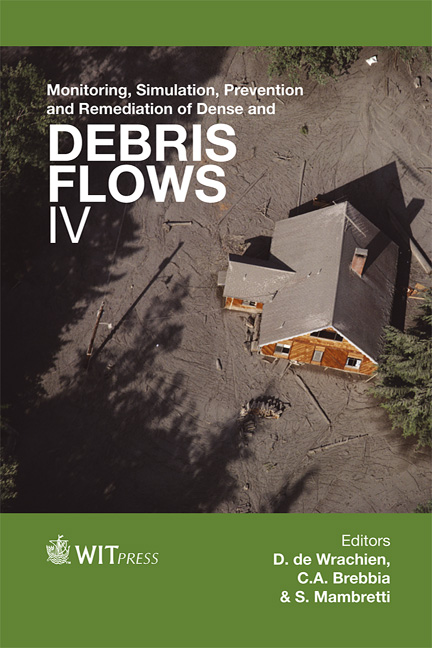Risk Assessment Method Of Debris Flow Occurrence Utilizing A Digital Terrain Model
Price
Free (open access)
Transaction
Volume
73
Pages
12
Page Range
85 - 96
Published
2012
Size
1,089 kb
Paper DOI
10.2495/DEB120081
Copyright
WIT Press
Author(s)
O. Nunokawa, T. Sugiyama, N. Ota, K. Okada & T. Fujii
Abstract
In Japan, train operation control based on rainfall index is being applied when it rains to secure the safety of the train. It is necessary to evaluate the stability of the slope considering the change of the water level on the slope’s surface layer for executing operation control more appropriately during wet weather. We have investigated an analytical model to make the evaluation method for the debris flow occurrence risk. The velocity of the water, which runs on the surface of the ground changes in various ways according to the ground’s inequalities, whereas, using this method, the velocity of the flow on the surface of a mesh is expediently constant. The velocity of the surface flow was assumed to be constant, and we examined the influence that the velocity exerted on the safety factor and the runoff. When the velocity of the surface flow is 2m/min, the peak of the rainfall is corresponding to the peak of the amount of flow. Such a tendency obtained as a result of calculation gave good agreement with the report of some past debris flows. Therefore, it is concluded that this method is appropriate for the evaluation of the risk of the debris flow occurrence. Keywords: digital terrain model, surface flow, rainfall. 1 Introduction In Japan, railway operation is controlled according to rainfall in order to ensure railway safety from rain-induced slope failures. Rainfall levels at which to start operational control have been determined empirically on the basis of factors such as disaster prevention measures, information on past disasters, and rainfalls that
Keywords
digital terrain model, surface flow, rainfall.





